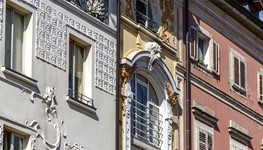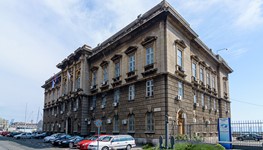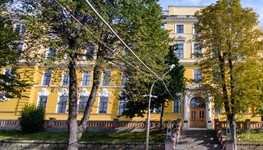Search result

Schittar House
The Schittar House was built in 1904 according to the project by Emilio Ambrosini, a famous architect who worked in Rijeka since 1884. Since its beginning, the house was intended for residential and business purposes, which marked it in a particular way. A photographic studio was situated in the attic so the entire floor was furnished with windows towards the north side, overlooking Korzo, with a balcony along its entire length. Unfortunately, after its conversion into a residential space in 19 ...

Administrative Building of the Port of Rijeka
The administrative building of the Port of Rijeka was built on the pier Zichy in 1885 at the site of the demolished port warehouse no. 1, according to the project by Josip Hubert. The palace was first used for the needs of the Royal Naval Administration under the Hungarian government. The building façades are decorated with historicistic, late Renaissance elements. The main entrance faces the port pier and the sea. The interior of the building radiates with harmony, and the stairca ...

Market Brajda
The market Brajda was designed by Giacomo Zammatio in 1895 as a municipal part of the new city district. The floor of the market was intended for public activities, while the spatial square around the pavilion was intended for the open market. The space was restored several times, but the decorations have been preserved: stone plastics, red-yellow brick and wrought iron articles in their original shape. The building was designed in neo-Renaissance style with the main entrance and two side entr ...

State Hungarian Royal Naval Academy
The State Hungarian Royal Naval Academy was built in 1903 according to the project by a Budapest architect Samuel Pecz. The construction was commissioned by the Hungarian Naval Administration. In authorial sense, Samuel Pecs was famous for the use of neo-Gothic and neo-Renaissance architectural elements in his projects. The State Hungarian Royal Naval Academy was built for the needs of higher education and has preserved its educational function until today. This monumental two-storey building w ...
